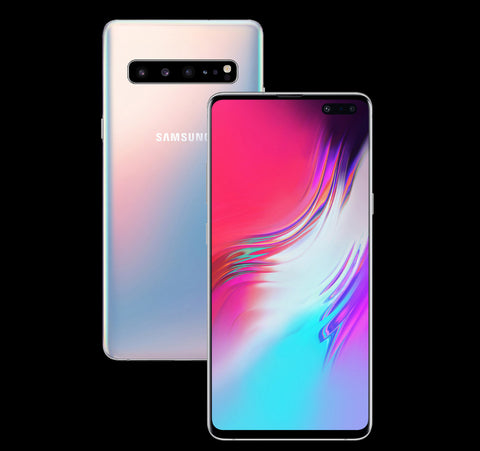
What is 5G? And what will 5G do for us?
First things first, what is 5G?
5G stands for fifth-generation cellular wireless.
With each new generation of data connection, we see a brand new way we can use our phones. 1G gave us calls, 2G gave us texts, 3G gave us mobile web, and 4G LTE improved the speed at which we could send and receive calls and texts, and browse the web. In fact, it increased the speed by about 10 times! Which is exactly what 5G promises...
What will 5G speeds be? And what will 5G do for me?
While the fastest 4G modem today maxes out at 2 gigabits per second, 5G’s maximum speed will be 20 gigabits per second, 10x faster than 4G! In plain English, 5G is crazy fast in transferring data.

These super-fast data transfer speeds are paired with a nearly zero latency rate.
The latency rate is the delay between sending and receiving information between devices. This means that 5G will essentially allow us to communicate practically in real-time, with only 1 millisecond of lag!
Sounds great! But when can I use 5G?
While 5G has been announced, it’s likely going to be another couple of years before it becomes the new industry standard. When can we use 5G? Experts are saying that by 2023, around 65% of the world population will have access to 5G.
Service providers all around the world are investing billions to have 5G readily available in most major cities by the end of 2020. North America may take a little longer, with 32% of North American mobile connections appearing on a 5G network by 2023.
5G is taking so long to launch in certain areas for a few reasons.
Due to the type of signal 5G cell towers transmit, it’s reach is pretty severely limited compared to 4G. This means that a lot of cell towers need to be set up to be able to have an uninterrupted 5G connection while moving around.

Some cities are taking their time in setting up 5G due to the enormous volume of cell towers that will need to be installed. Each city has their own regulations for building permits and aesthetics, and some 5G hardware may have to be installed on street lamps due to the restricted reach, causing concern for how this will make cities look.
Another factor in the delay of the roll-out of 5G is a bit of a catch-22. Due to the enormous cost and effort required to launch 5G, service providers are reluctant until it becomes the mainstream. In order for 5G to become the mainstream, mobile phone developers will need to launch devices that are compatible with 5G, which they’re reluctant to do until 5G is available for their customers…
Luckily, the innovators of the industry are pulling through to make 5G the new normal. Samsung has already launched their HyperFast Samsung Galaxy S10 5G, and we can confirm, if you’re in a place where 5G is readily available like London, it’s crazy fast. Huawei are also launching their Mate X device in China on the 15th of November 2019, which has a foldable screen and 5G accessibility.

While 5G is expected to take considerably longer to launch than 4G took, this wait has always been expected. 4G was announced back in 2010, but it wasn’t until 2012 that it became the industry standard. If you just can’t wait to get your hands on 5G, you can get yourself a device like the Samsung Galaxy S10 5G that supports it, and move to a major city that has service providers that have implemented 5G… the Samsung Galaxy S10 5G will set you back upwards of $949.99, so just make sure you protect it!
A blog by Gabrielle Lazareff
REFERENCES
https://www.samsung.com/us/mobile/galaxy-s10-5g/
https://www.lifewire.com/5g-challenges-4580354
https://www.techadvisor.co.uk/news/mobile-phone/huawei-mate-x-3692775/
https://www.pcmag.com/article/345387/what-is-5g
https://www.pcmag.com/news/370686/this-is-why-the-iphone-11-doesnt-have-5g